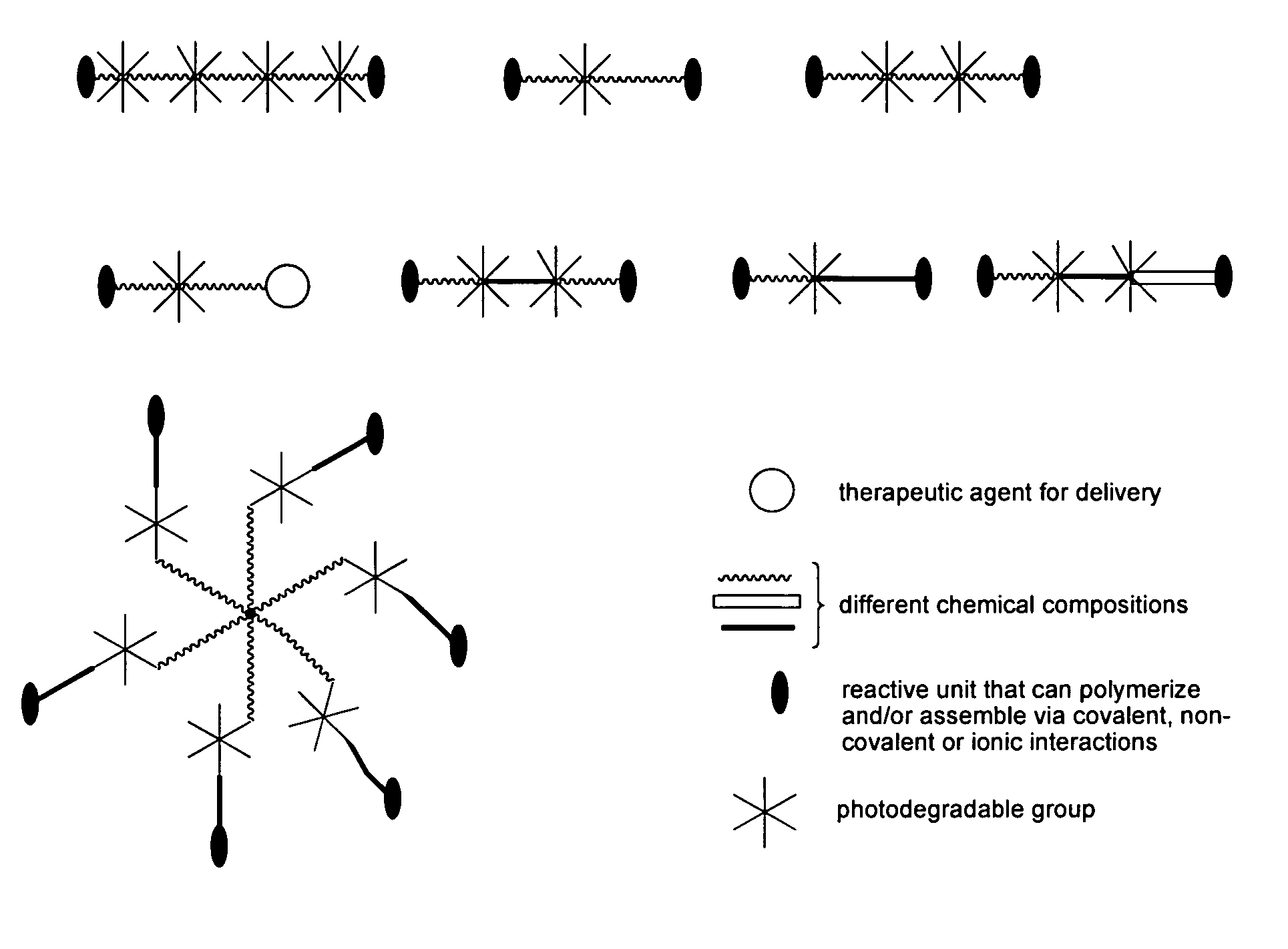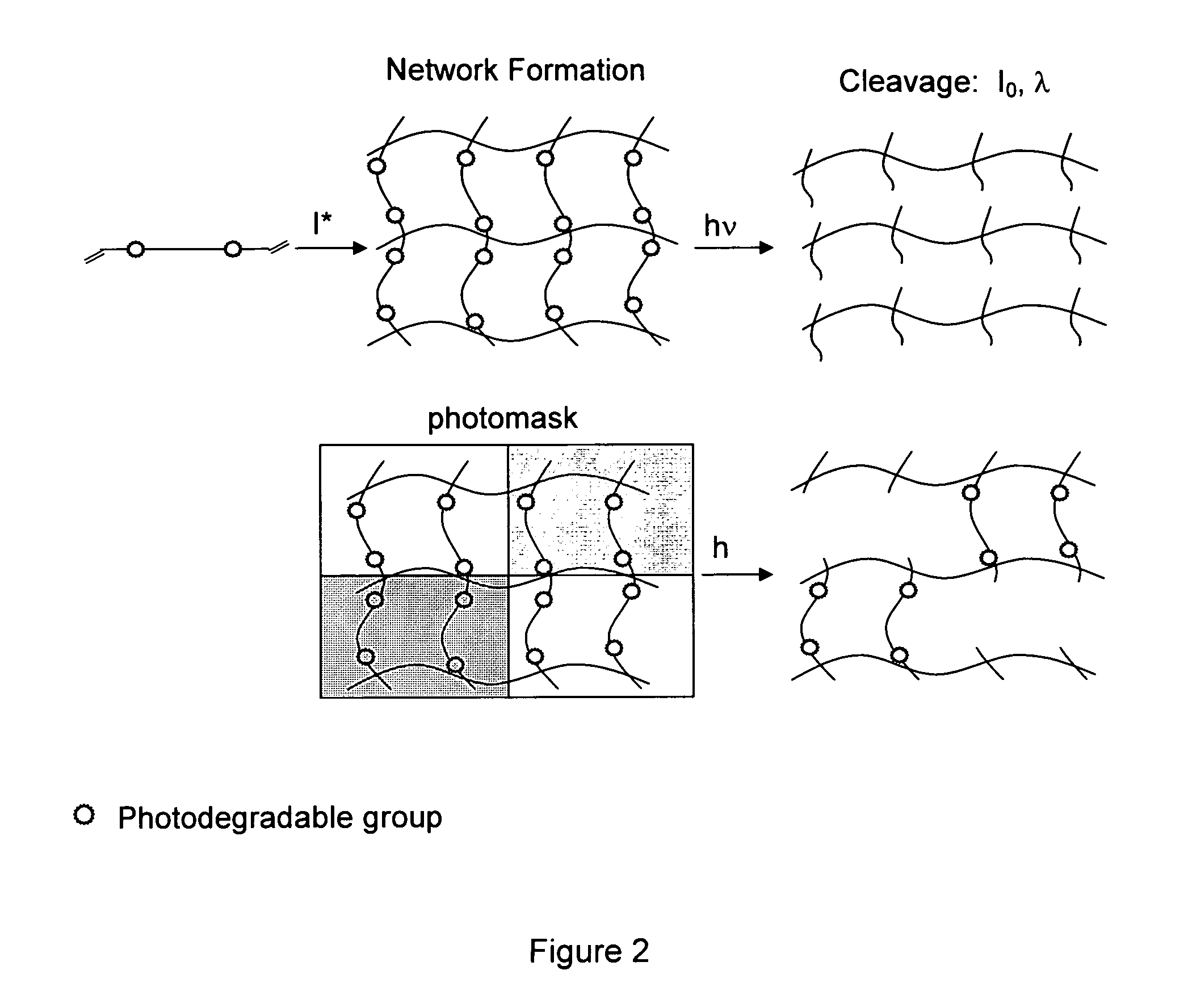Photodegradable groups for tunable polymeric materials
a polymer material and photodegradable technology, applied in the field of photode, can solve the problems of biomaterial deformation, sustained and non-instantaneous mass loss, no spatial control, etc., and achieve the effect of being easily determinabl
- Summary
- Abstract
- Description
- Claims
- Application Information
AI Technical Summary
Benefits of technology
Problems solved by technology
Method used
Image
Examples
synthesis examples
[0034]Techniques. All reactions were performed under an argon atmosphere using a Schlenk line unless noted otherwise. 1H NMR spectra (δ, ppm) were recorded on either a Varian Inova 400 (400 MHz) spectrometer. All spectra were recorded in CDCl3 with tetramethylsilane (TMS) as an internal standard unless noted otherwise.
[0035]A general synthetic route to form photodegradable groups is shown in Scheme 1:
[0036]
[0037]The structures can be functionalized with reactive end groups using methods known in the art and described herein. In several of the schemes and compounds shown herein, the backbone group is shown in parenthesis without a number of repeating units specified. This structural information indicates the number of repeating units may be as many or as few as desired, as long as the structure functions in the desired way. As known in the art, compounds can be synthesized in different ways, as exemplified below.
[0038]Synthesis of the photodegradable group, poly(ethylene glycol) mono...
PUM
| Property | Measurement | Unit |
|---|---|---|
| wavelengths | aaaaa | aaaaa |
| wavelengths | aaaaa | aaaaa |
| wavelengths | aaaaa | aaaaa |
Abstract
Description
Claims
Application Information
 Login to View More
Login to View More - R&D
- Intellectual Property
- Life Sciences
- Materials
- Tech Scout
- Unparalleled Data Quality
- Higher Quality Content
- 60% Fewer Hallucinations
Browse by: Latest US Patents, China's latest patents, Technical Efficacy Thesaurus, Application Domain, Technology Topic, Popular Technical Reports.
© 2025 PatSnap. All rights reserved.Legal|Privacy policy|Modern Slavery Act Transparency Statement|Sitemap|About US| Contact US: help@patsnap.com



